Server Connections
Before you can publish data with GeoCat Bridge, you will have to configure one or more server connections. This can be achieved in the Connections section of the Bridge dialog:
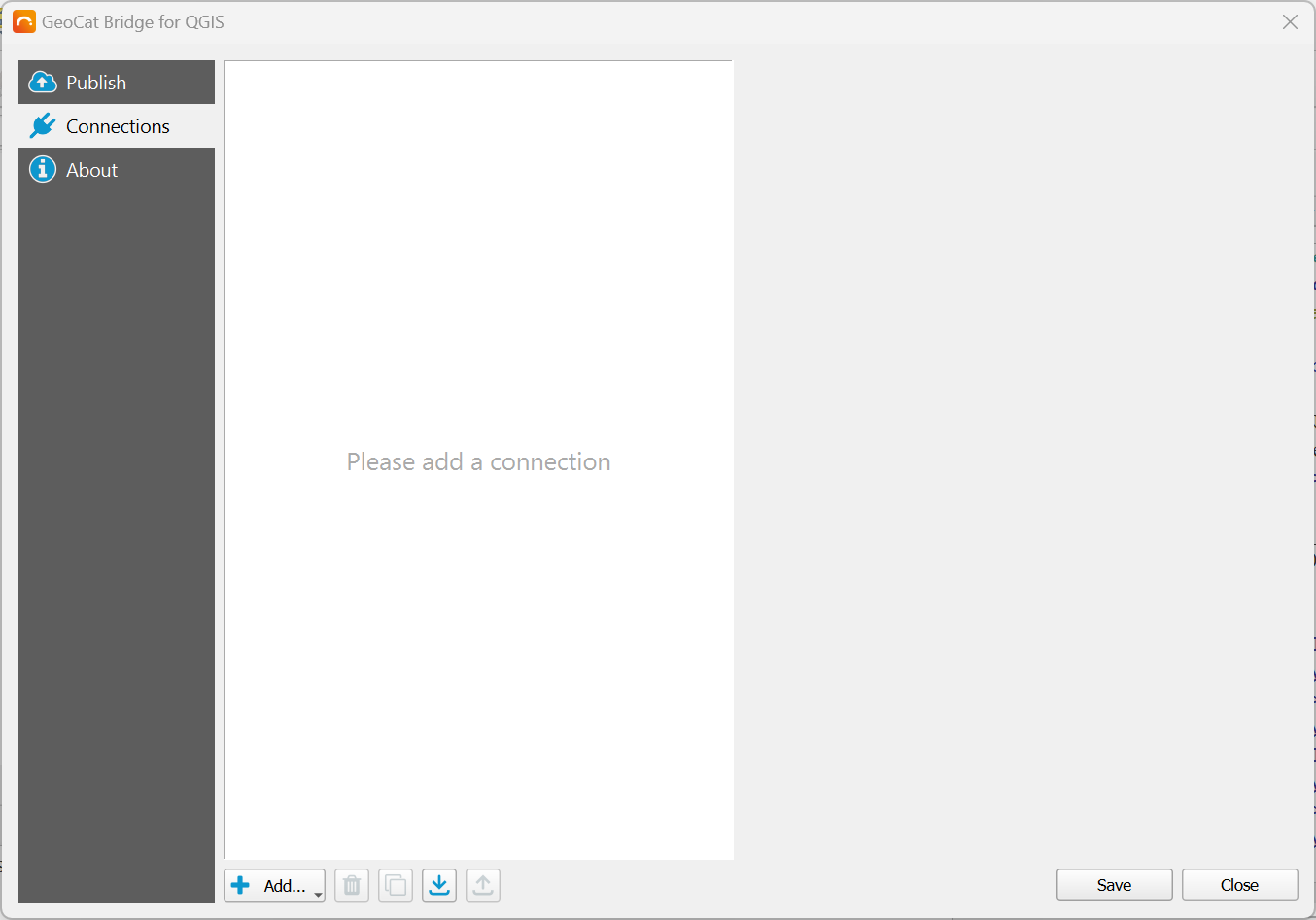
Adding connections
Click Add… and choose one of the supported server types to create a new server connection:
GeoServer
MapServer
PostGIS
GeoNetwork
If you wish to remove a server connection, select it from the left panel and click the Remove button.
The
Duplicate button may come in handy if you wish to try out an alternative configuration based on an existing
server connection.
Below you can find more info about the different types of services and connections supported by Bridge.
GeoNetwork
Configure a GeoNetwork connection to publish your metadata to an online catalog (CSW).
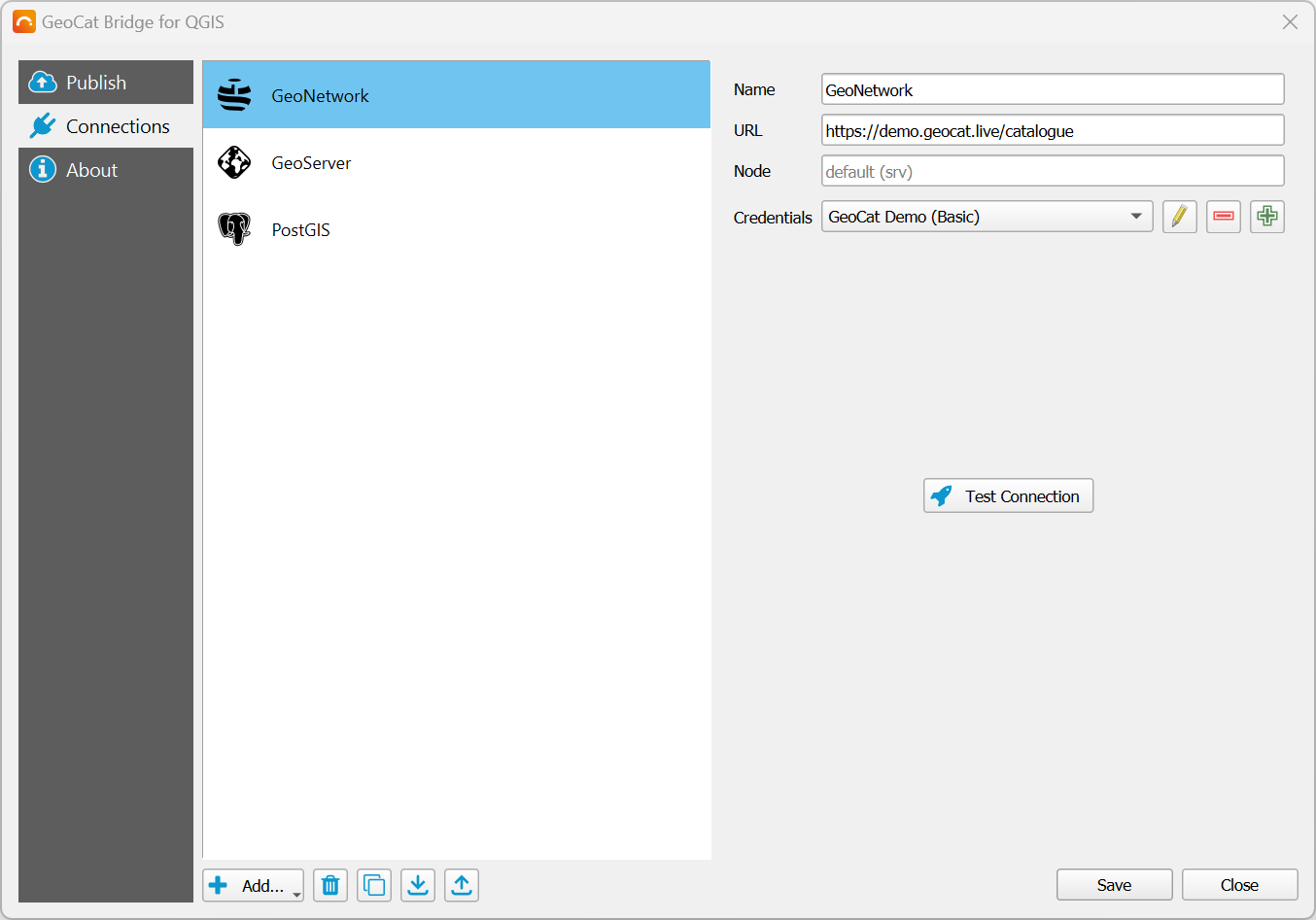
srv, which will be used if you leave the Node field empty.Click Test Connection to verify that the connection can be established.
Note
lxml Python library. This library used to be installed by default,
but this no longer applies to QGIS 3.22 (LTR) and up, for example.lxml, it will issue a warning. Therefore, if you wish to publish metadata,
please install this missing Python package (e.g. using the OSGeo4W setup or Python’s pip tool).GeoServer
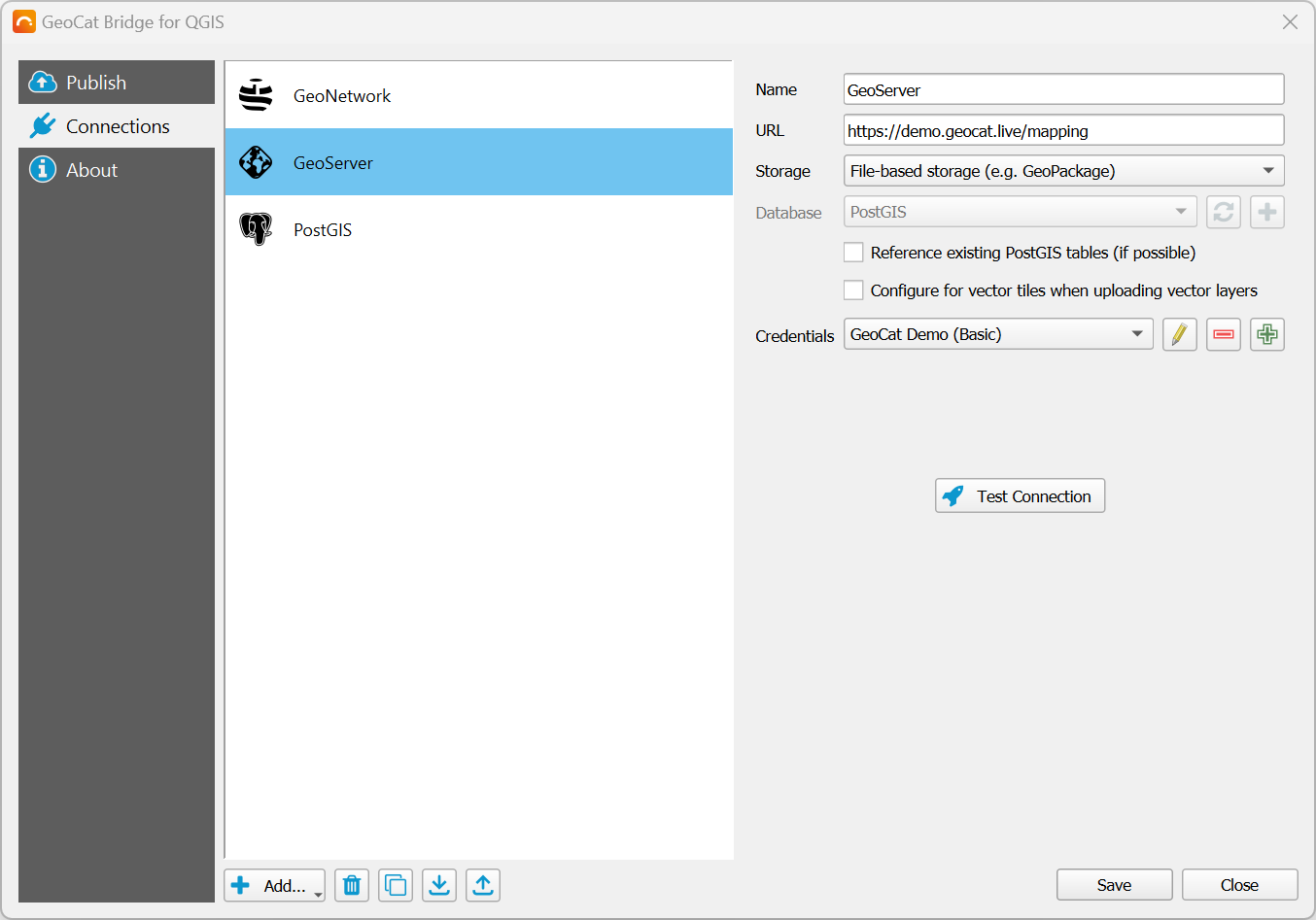
http://localhost:8080/geoserver) or the REST API URL (e.g. http://localhost:8080/geoserver/rest). Both URLs will work.If required, you can create and publish Mapbox styles for vector tiles. Mapbox styles and sprite sheets will be processed after all layers were successfully published to GeoServer.
Click Test Connection to verify that the connection can be established.
You also need to specify how the layer data should be stored. Three different storage methods are available:
Import into PostGIS database (direct connect) (vector layers only)
Import into PostGIS database (managed by GeoServer) (vector layers only)
File-based storage
This method is the most straight-forward and should always work, as there are no dependencies. However, depending on the size of the data, this method may be slower and could potentially fail due to network timeouts or server-side file upload size limitations.
Import into PostGIS database (direct connect)
Note
Import into PostGIS database (managed by GeoServer)
The layer data is packaged and uploaded to GeoServer, and a job is scheduled on the server to import the data into a PostGIS database.
This is a good approach if you do not have direct access to the PostGIS database from your machine, but GeoServer does.
Note
Please note that some limitations apply:
This method requires the GeoServer Importer extension to be installed and enabled.
Because Importer can only import vector data from Shapefiles, attribute names may be shortened on export to 10 characters (.dbf limitation). Those names will also be applied to the PostGIS table attributes. However, Bridge will try to make sure that attribute names referenced in styles are renamed accordingly, so the styles won’t break.
Created PostGIS tables must be deleted manually. Please read this warning for more information.
Datastore selection
In the Import into PostGIS database (managed by GeoServer) mode, you must either:
select an existing PostGIS datastore connection on GeoServer that can act as a template;
or define a new PostGIS connection to use on the GeoServer side.
Bridge will automatically try to list all available PostGIS datastores on GeoServer. You can select any datastore as the template that Bridge should use to create a new datastore with the same connection details as the selected one.
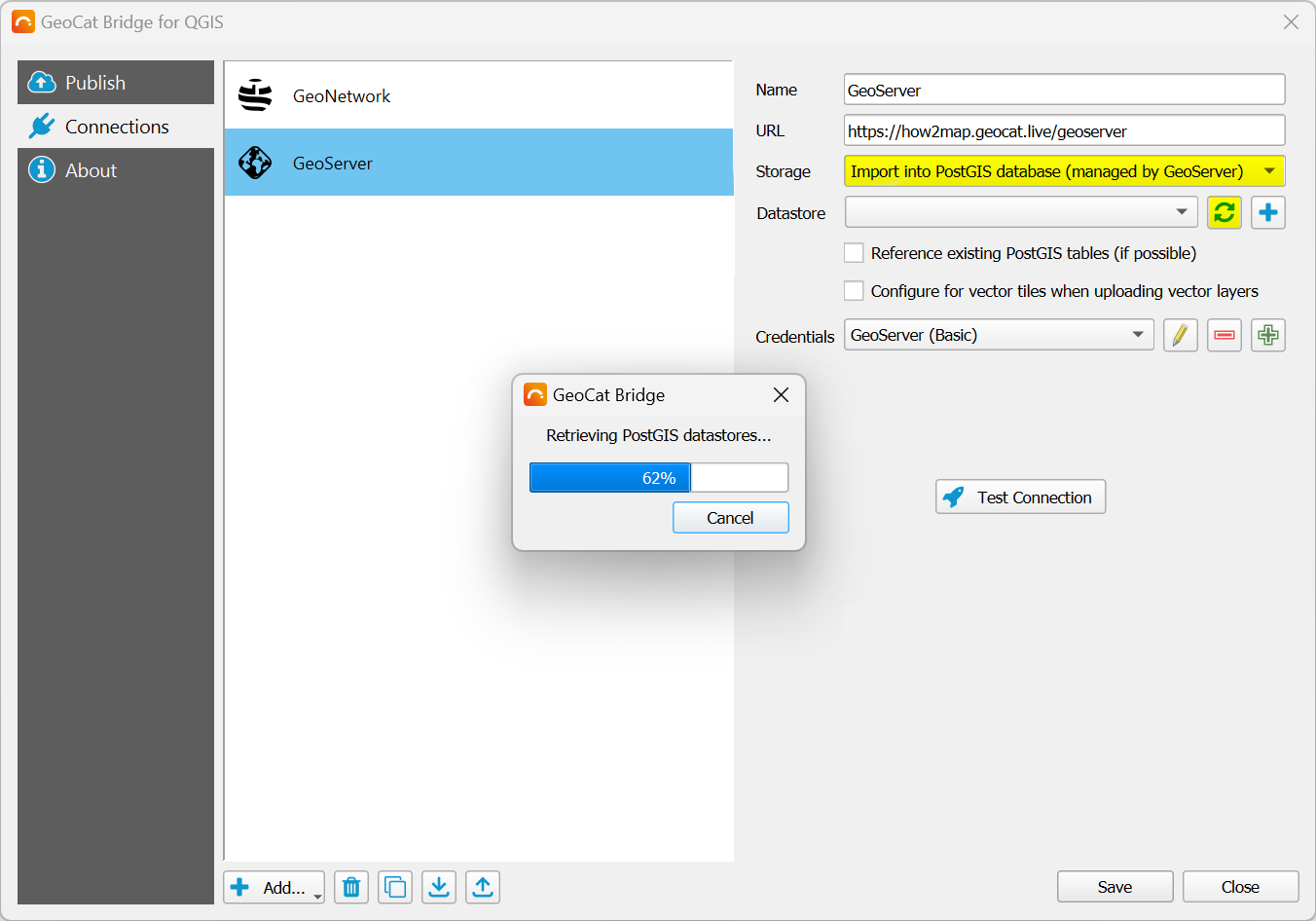
Note
Alternatively, you can click the button to create a new datastore yourself, if you know the connection details.
Note that this is the connection that GeoServer should use, and that the connection might not work locally on your machine.
For more fine-grained control, or if you wish to specify a JNDI connection pool instead, please create the datastore in the GeoServer Web UI instead. Bridge should then pick up the new datastore automatically, so you can select that as a template.
Warning
PostGIS
Configure a PostGIS connection if you wish to upload layer data to PostGIS directly. Setting up this connection is required when using the Import into PostGIS database (direct connect) in a GeoServer connection.
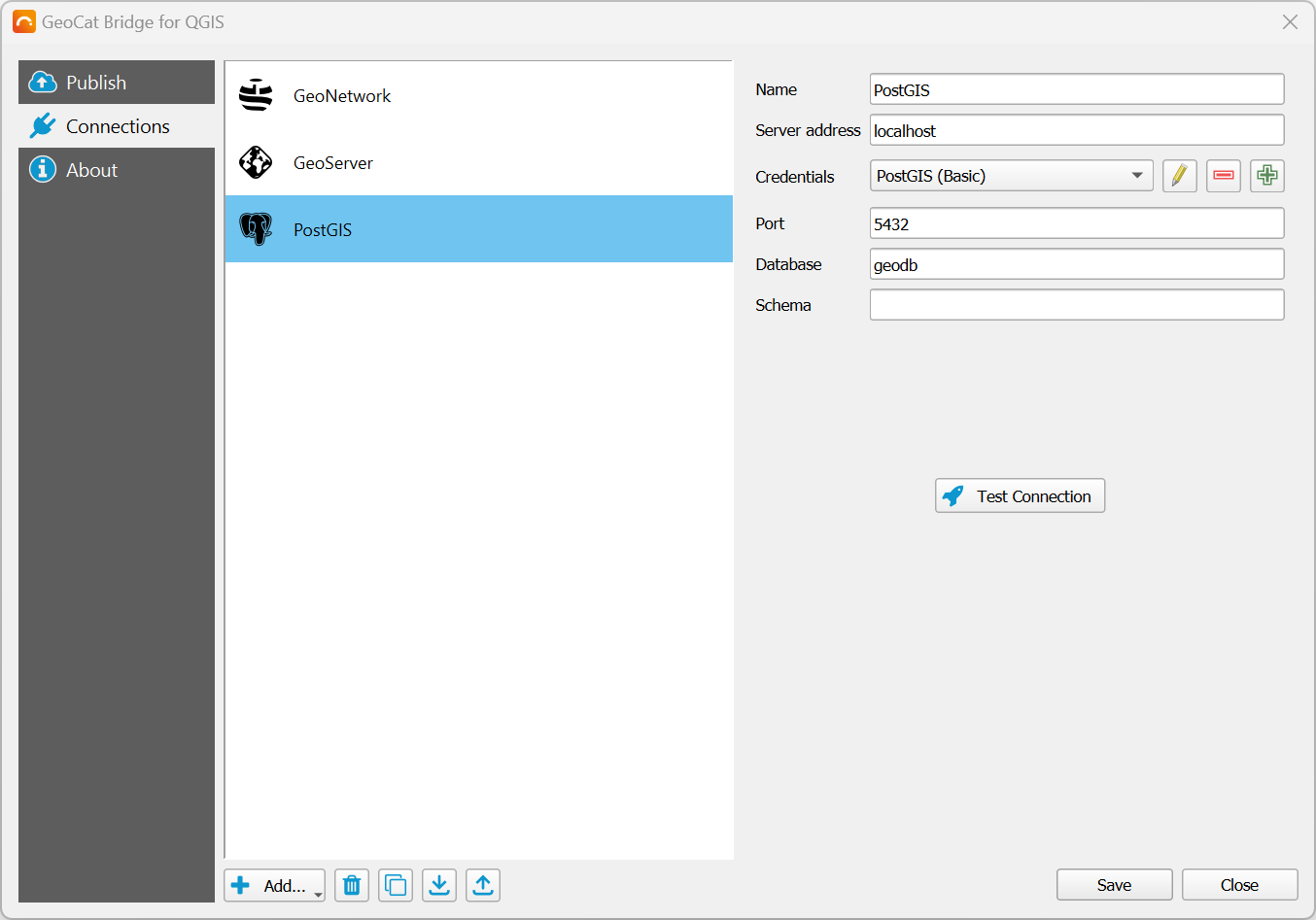
Note
JNDI connection pool support is currently unavailable.
MapServer
Configure a MapServer connection to publish your map (layer data and symbology). A MapServer endpoint (Mapfile) is created for each QGIS project.
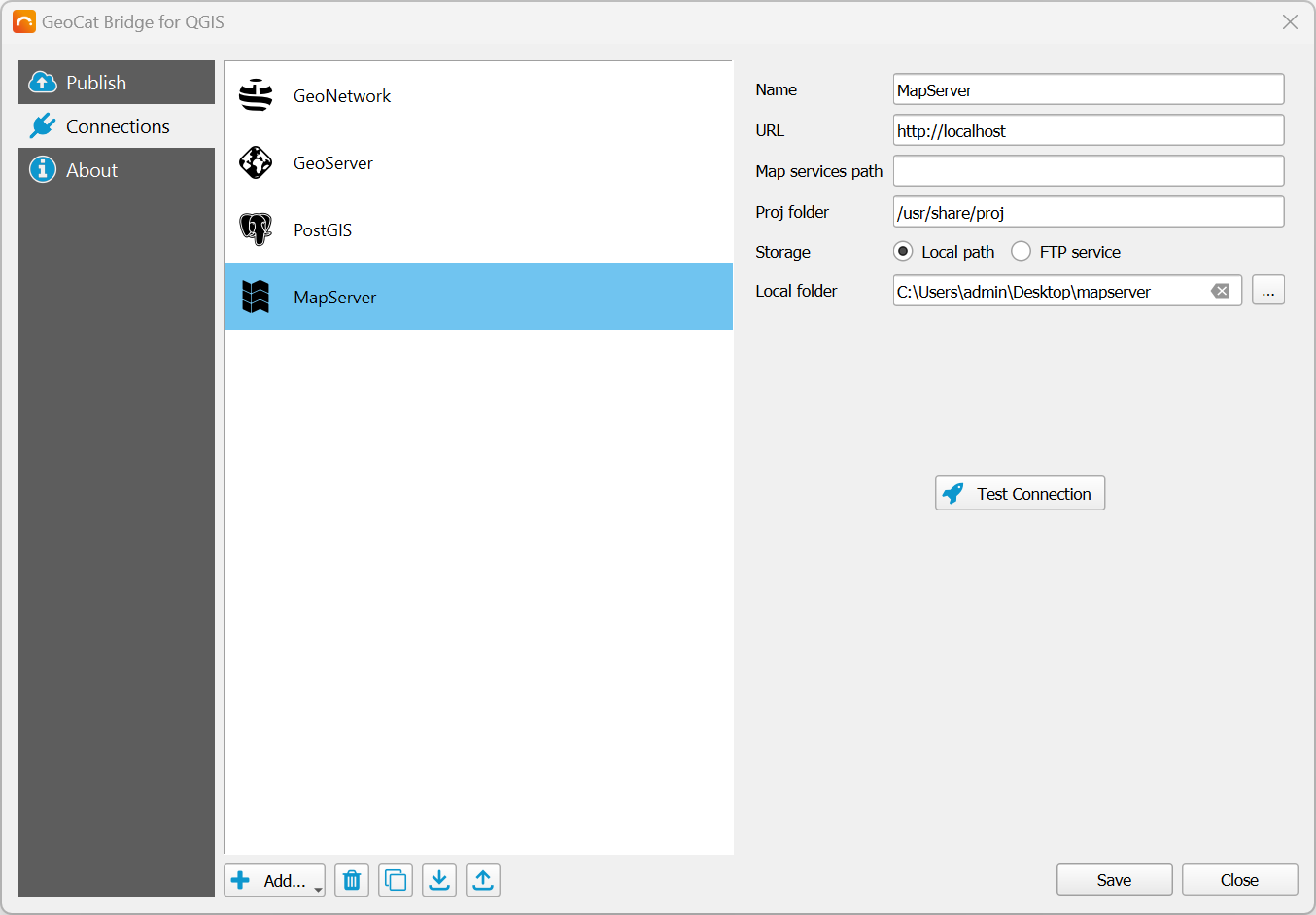
Under Storage, configure how Bridge should save the MapServer data. Choose Local path to store all files on the local file system. Choose FTP service to transmit the files over FTP to the online MapServer instance. Depending on which option is selected, you will see some additional parameters that must be configured:
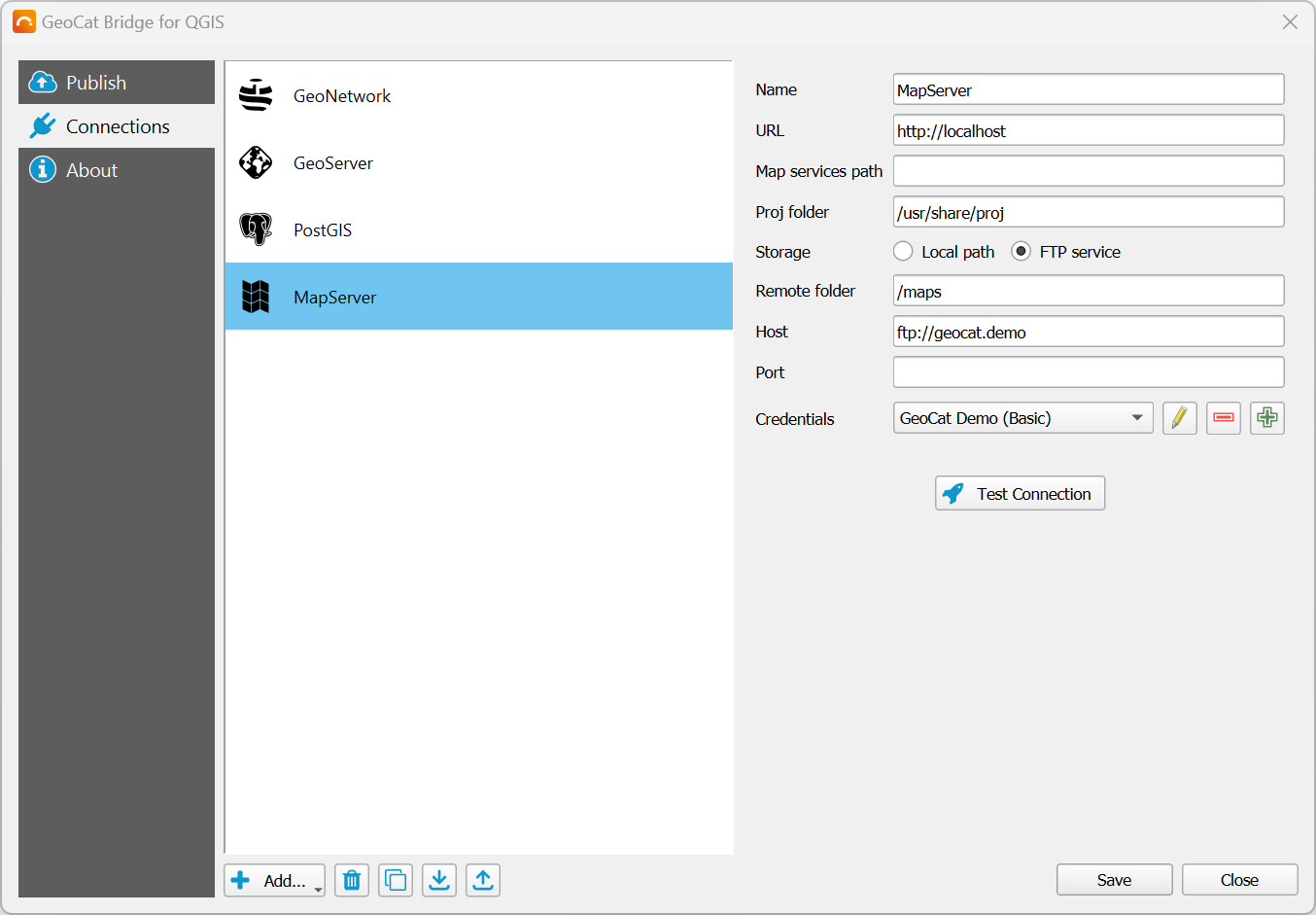
Proxies & certificates
The GeoNetwork and GeoServer connections mentioned above communicate with the server over HTTP(S) and all their outgoing traffic is handled by the Python requests library.
Currently, GeoCat Bridge does not provide a way to set up a proxy server for these connections, and any QGIS proxy settings that may have been defined are ignored.
There are plans to add proxy support in future QGIS Bridge releases.
Any QGIS SSL certificate settings are also ignored, which means that Bridge will not be able to connect to servers that use self-signed certificates, for example.
However, there is a workaround to this problem. You could set a system environment variable called REQUESTS_CA_BUNDLE that points to a .pem certificate bundle.
This bundle should include the root certificate and any intermediate certificates that are required to verify the authenticity of the server certificate.